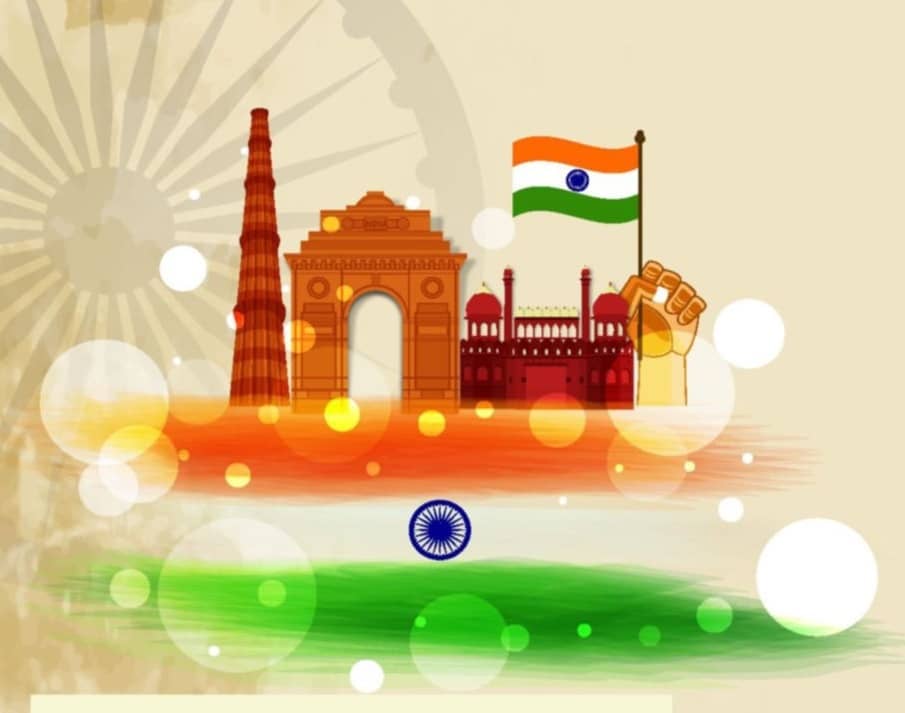Happy Children’s Day!
Sunday, November 19, 2023
HOW ZIPPERS WORK
Friday, November 17, 2023
RECORDING DAILY WEATHER
Weather forecasting
Origin: In 1831, a naval officer named Robert FitzRoy came up with the idea of predicting the weather. Deeply troubled with loss of life due to unpredictable, extreme weather, he was determined to set up an office in London where he used some basic equipment such as the barometer, nautical charts and recorded patterns to predict the weather. As the telegraph network expanded in the 1830s, FitzRoy could gather idea from different coasts at his London office.
If he thought a storm was approaching, he immediately released a warning telegraph to the concerned port where a drum was raised to alarm the sailors. The first ever daily weather forecast was published in The Times newspaper on August 1, 1861.
Method of forecasting weather: Meteorology is the study of weather and the atmosphere. A Meteorologist is a person who studies weather patterns and predicts Earth’s atmospheric phenomena. Meteorologists gather information about the weather from satellites, balloons and other instruments. They use powerful computers to analyse the collected data and then draw weather maps to forecast the weather.
Importance: Weather forecasting forewarns people about future weather conditions. It also warns people about other weather hazards such as thunderstorms, hurricanes and heavy rainfall. Thus far, accurate weather predictions have been able to save the lives of many.
How precise are they: After technological advancements, the weather forecast stations today are well equipped to provide advanced warnings of severe weather, but they aren't always accurate. Accurate weather forecasting requires a lot of observational data collected from thousands of weather stations across the globe. Also it is tough to predict the weather, which constantly changes at a quick pace.
Thursday, November 16, 2023
DO YOU KNOW
Why bananas are curved?
Bananas have a unique curve shape due to a phenomenon called Negative Geotropism. In simpler terms, bananas grow against the force of gravity. The reason for this curvature is a survival strategy employed by the banana plant. As the banana fruit begins to develop, it grows towards sunlight, which usually comes from above the canopy of leaves of the plant. This upward growth against gravity causes the banana to curve naturally, giving its distinctive shape. The curvature also protects the growing fruit from getting too much sunlight, which can be damaging. So, the curve of the banana is not just an interesting quirk; it’s the result of an ingenious adaptation in nature.
Tuesday, November 14, 2023
TO REDUCE STRESS AND TENSION
Live with a sense of humour
A court jester went too far one day and insulted his king, who then became so enraged that he ordered the jester to be executed. The court begged the king to have mercy on this man who had served him for so many years. The king relented only enough to give the jester a choice as to how he would like to die of old age."
It is difficult to get on with people who lack this God-given gift. They may make scenes, cut ridiculous figures and cause their own alienation in society. On the other hand, a good sense of humour can save situations. It also reduces stress and tension, helps cope with pain, wins friends, improves health and diffuses difficult states of affairs.
Most people won't do something because of the fear of failure or of looking silly. A tinge of humour can help overcome such reservations and inhibitions that hold us back. It is a great way of keeping ourselves happy. See things positively and add a flavour of humour into everything you experince.
14 NOVEMBER CHILDREN'S DAY
The children of today, The India of tomorrow..!
“Children are like buds in a garden and should be carefully and lovingly nurtured, as they are the future of the nation and the citizens of tomorrow.” ---Jawaharlal Nehru

Monday, November 13, 2023
THE FATHER OF MODERN COMPUTER
Alan Turing
Nobody can ever forget Alan Turing. Today, the world is at your finger tips, thanks to the contribution of Alan Mathison Turing.
Alan Turing was born in London on 23rd June 1912. His father, Julius Mathison Turing, was British member of the Indian Civil Service. While he was a student, Turing was very much interested in Mathematics. However the book titled ‘Natural Wonders Every Child Should Know‘ attracted him deeply and eventually he turned to learning science. He studied in King’s College, Cambridge and he became one of the noted scientists of this period.
During the Second World War, Turing worked in Britain’s Code Breaking Centre. He successfully developed a number of devices for breaking the German Ciphers including the technique of bomb and electro mechanical machine. Alan Turing made a remarkable contribution in the development of computer science by giving a formalisation of the concept of ‘algorithm’ and computation with the Turing Machine. This device can be considered as a model of a general purpose computer, science and artificial intelligence.
In 1948, Turing joined the Max Newman Computer Laboratory at Manchester University. He assisted there for the development of the Manchester Computer. In fact, he was a man in search of knowledge always and his attention turned to Mathematical Biology. He wrote a Paper on the Chemical basis of Morphogenesis and predicted Oscillating chemical reactions.
Unfortunately, this great scientist bade farewell to this world on 7 June 1954 at the early age of 41. In memory of Alan Turing, The Association for Computing Machinery gives the annual ‘ACM Turing Award‘ to the scholars who get the highest distinction in computer science.
Sunday, November 12, 2023
FESTIVAL OF LIGHTS
Stories and Legends of Deepavali
India, the land of rich cultural heritage, has one or the other festival every month. It is the spiritual and religious richness in India that each festival has significance related to lifestyle, seasons, history and legends of this great land. One such festival is the 'festival of lights: Deepawali'.
Like every other Hindu festival, stories and legends are associated with Diwali too. Here are some of them in brief:
Return of Shri Ram To Ayodhya: The most famous legend behind the celebrations of Diwali is about the prince of Ayodhya Nagri - Lord Shri Ram. While in exile, the king of Lanka, Ravana, kidnapped Ram's wife, Sita from the forest, where they were staying as per the instructions of King Dashratha, father of Lord Ram. In order to free Sita from Ravana's custody, Ram attacked Lanka with the aid of 'Vaanar Sena' in which, Ram defeated Ravan and released Sita. On the return of Lord Ram along with his wife Sita and brother Lakshman, from exile after 14 years, people of Ayodhya decorated their homes as well as the city of Ayodhya by lighting tiny diyas all over. It was this day.
The Rebirth of Lakshmi: Lakshmi, the goddess of fortune and prosperity, is the most prominent goddess associated with Diwali and thus her story is one that has particular significance to the festival. As the legend goes, through a display of arrogance, Lord Indra once provoked Lakshmi to leave the divine world and enter the milky ocean. Without the guidance and blessings of Lakshmi, the world then turned into a dark place and the gods were desperate to bring her back. After churning the milky ocean (Samudra Manthan) for 1,000 years, Lakshmi was finally reborn, rising to the surface on a beautiful lotus flower and once again bringing to the world her blessings of good fortune. On Diwali, people light up the night to guide Lakshmi into their home and bring good fortune and prosperity for the year to come.
Lord Krishna Destroyed Demon Narakasur: Legend holds that Narakasura was blessed by Brahma with the power that he could only die at the hands of a woman, whom Narakasura believed would never happen. After victory over Lord Indra during a war, Narakasur snatched away the magnificent earrings of Mother Goddess Aditi. Narakasur also imprisoned sixteen thousand daughters of Gods and saints in his harem. With the support of Lord Krishna, Satyabhama defeated Narakasur, released all the women from his harem and restored the magnificent earrings of Mother Goddess Aditi. While dying, Narakasura requested that no one mourn his death and instead celebrate with life and colour, as we see take place every year during the Diwali festival.
The Return of The Pandavas: The great Hindu epic 'Mahabharata' has another interesting story related to the 'Kartik Amavasya'. According to the story, the 'Pandavas', were sentenced to thirteen years exile after losing a game of dice, against 'the Kauravas'. Therefore, the Pandavas spent thirteen years in the forest and returned to their kingdom on the day of 'Kartik Amavasya' leading to celebrations.
Coronation of King Vikramaditya: Another legend about Diwali celebrations relates to one of the greatest Hindu King - Vikramaditya. It was the day when he was coronated and the people celebrated this event by lighting tiny earthen 'diyas'. His reign was also the beginning of Vikram Samvat, the Hindu calendar, and celebrated as Hindu New year every year on this day in some regions.
Kali Destroys the Demons: Kali, the goddess of destruction, is celebrated in West Bengal as the major deity associated with Diwali. According to Hindu mythology, Kali was born to liberate heaven and earth from the cruel oppression of the demons. However, after slaying all the demons, Kali lost control and continued her path of destruction until the intervention of Lord Shiva. Her day of repentance is celebrated on Diwali, paying tribute to the awesome power of Kali and her embodiment of the ultimate victory of good over evil.
Lord Mahavira attains Nirvana: While these previous legends come from Hindu mythology, Jains also have their own traditions that guide the celebration of Diwali. According to Jainism, Lord Mahavira, a contemporary of Gautama Buddha, reached enlightenment at the time of Diwali in the 6th century BCE, around the time of the first historical records of the festival’s observation.
Guru Hargobind's Release from Prison 'Bandi Chhor Divas': In Sikh tradition, this date commemorates the 17th-century release from prison of Guru Hargobind, a significant figure in the Sikh religion, who had been detained under the Mughal empire. It is also a time of year during which all Sikhs traditionally gather to receive guru blessings, and has officially been observed as a Sikh festival since the 16th-century.
The basic nature of the human spirit is celebration whatever may be the occasion. So let's celebrate Diwali, let's celebrate Life!
Happy Diwali!
The Lesson of Ubuntu
HAPPINESS GROWS WHEN SHARED An anthropologist is a person who studies human behaviour, culture, and social life in a scientific manner. Suc...

-
ANNABELLE The real Annabelle doll is a well-known case of alleged paranormal activity, made famous by Ed and Lorraine Warren, two well-know...
-
WHY IS SUGAR WATER STICKY? Sugar water is sticky because sugar molecules have a strong affinity for water molecules, forming hydrogen bonds ...
-
A MAN AND THE BLIND BOY A blind boy sat on the steps of a building with a hat by his feet. He held up a sign which said, "I am blind. ...











